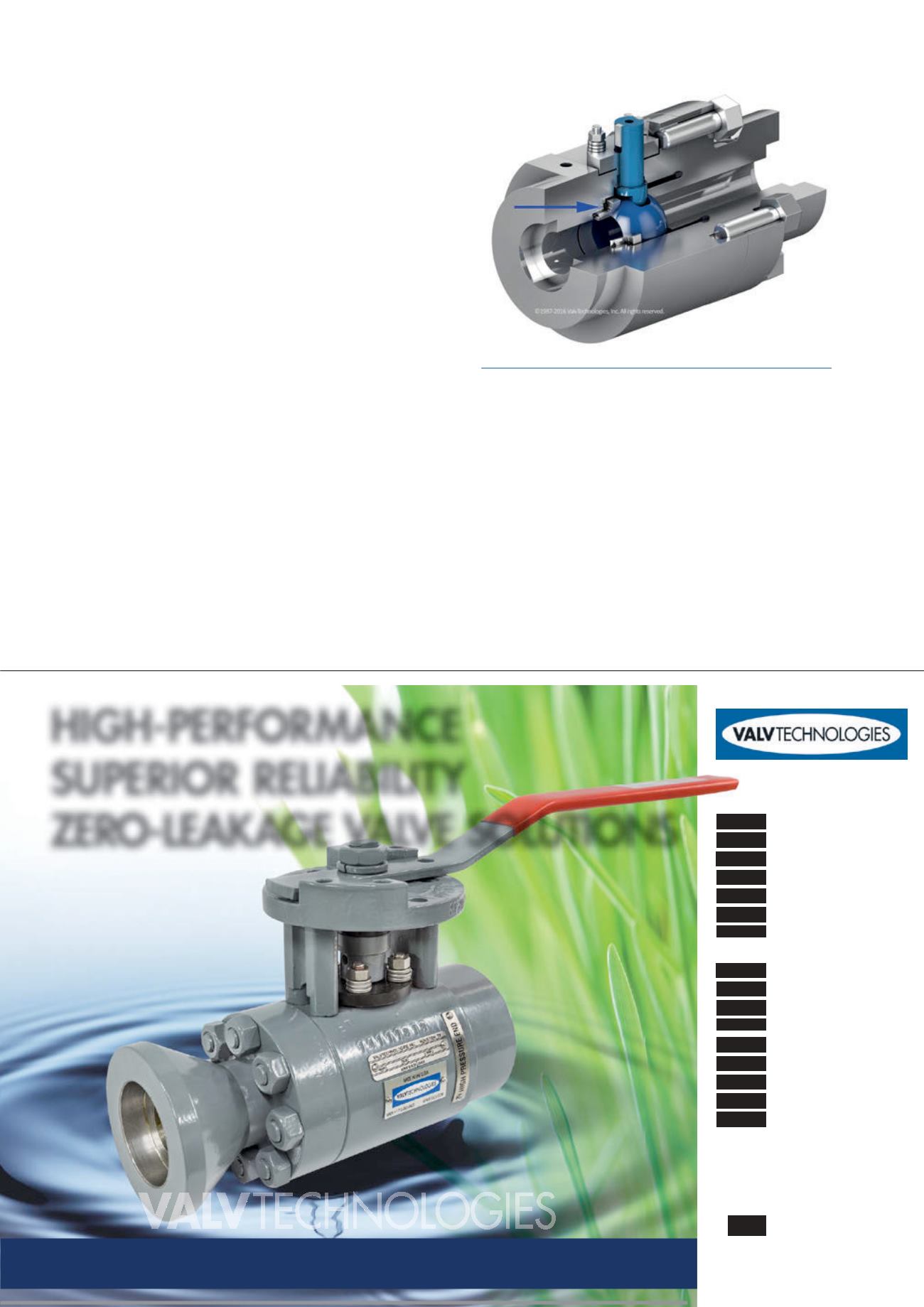
significant expense on an average of every 18 months. They were
looking for an alternative to reduce their costs and increase
operating performance.
In a rising stem ball valve, the operation to open or close the
valve is via a linear stem that is rotated by grooves and pins as the
stemmoves up and down. The ball is tipped away and rotated
through a helix connection between the ball and stem. A lower
stem at the base of the ball holds it in position while the valve is
cycled open or closed.
The V Series valve can be categorised as a floating fixed ball
design with an integral seat machined into the body, which
eliminates one of two potential leak paths previously mentioned.
The floating fixed ball design is used as the ball is not connected
to the stem or body, but is held in position by an upstream seat
and a heavy duty Belleville spring (Figure 3) to address the
second potential leak path between the ball and seat. As a result,
it does not rely on pressure to push the ball onto the seat to
provide isolation, even in low pressure conditions that are
challenging for conventional floating ball valves.
In this application, wear resistance is a factor for
long-term service life. ValvTechnologies’ RiTech
®
coating
(Figure 4) provides wear resistance to the abrasive debris
present in the natural gas stream. The coating is a high
velocity oxygen fuel (HVOF) coating process, where chrome
carbide is melted and applied to the ball and seat of the
valve. The resulting hardness is between
66 and 69 Rockwell C (Rc), which compares to stainless steel
at 18 Rc, stellite at 42 Rc and diamond at 92 Rc. It is an
extremely hard coating that protects the surfaces from wear
against abrasives. The ball and seat are mate lapped to
provide an exact surface match between the seat and ball for
zero-leakage isolation performance. As part of
ValvTechnologies’ Quality Control Procedures, all valves are
tested according to the requirements of ASME B16.34 and
FCI 70-2 to measure shell and seat isolation performance. To
meet the seat isolation test standard, valves are pressurised
to 110% of the pressure rating, which for Class 900 valves
would be 2442 psig (168 barg). ValvTechnologies conducts a
low pressure seat test at 1000 psig (69 barg) in Class 900
valves to verify zero-leakage performance using nitrogen gas,
Figure 3.
ValvTechnologies’ V Series cross section view with
arrow pointing to the Belleville spring.
ENGINEERED PRODUCTS FOR SEVERE SERVICE APPLICATIONS
™
ValvTechnologies, Inc.
Houston, Texas
+1 713 860 0400
|
Performance and reliability
are vital to the LNG process.
ValvTechnologies
achieves
these goals through industry
experience, custom-engineered
designs and manufacturing in
the USA.
As a global leader in the design
and manufacturing of severe
service valves, ValvTechnologies
has established a worldwide
reputation for superior quality &
dependability. We are commit-
ted to providing customers with
exceptional solutions to improve
overall performance & reliability.
HIGH-PERFORMANCE
SUPERIOR RELIABILITY
ZERO-LEAKAGE VALVE SOLUTIONS


